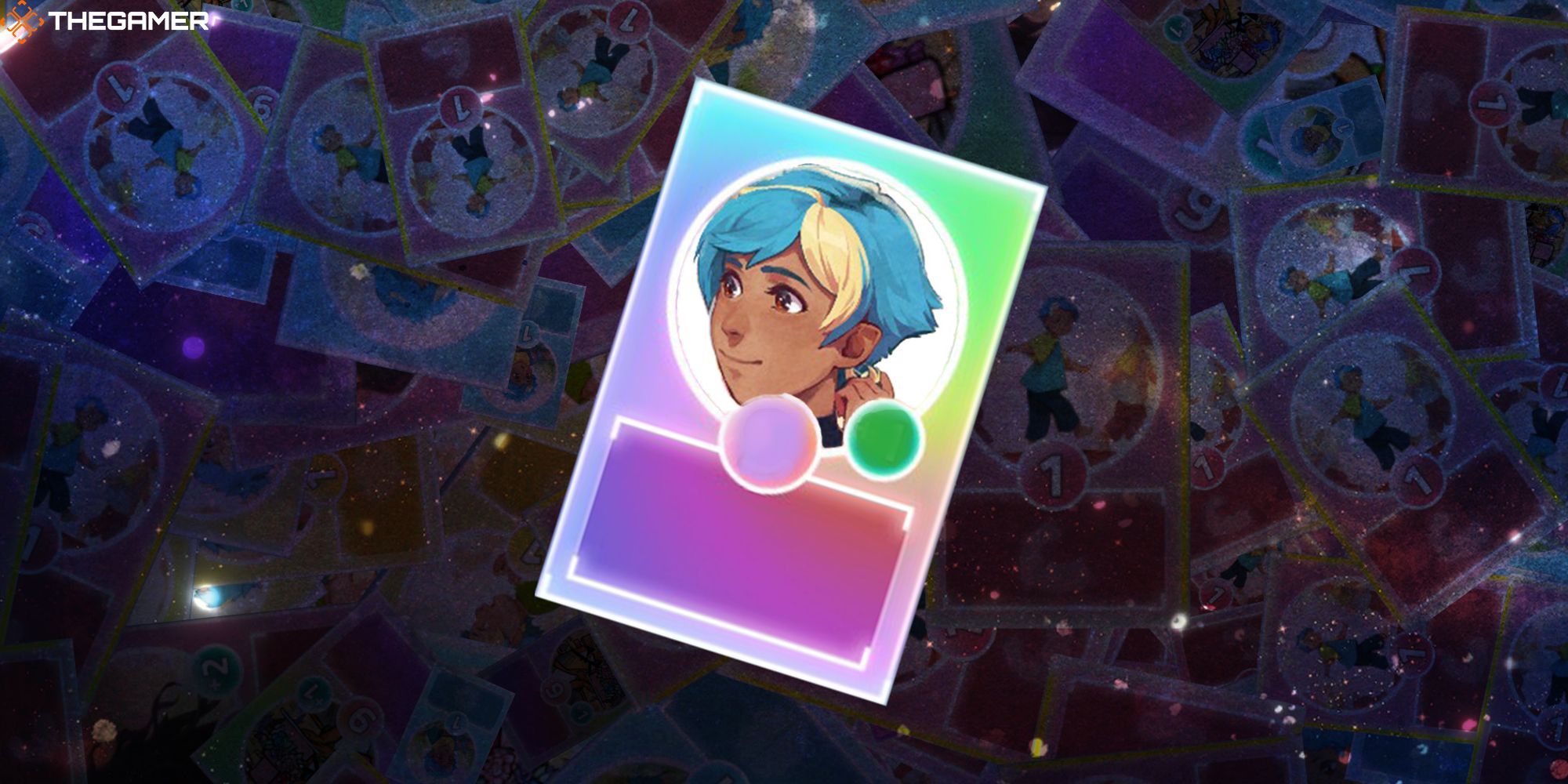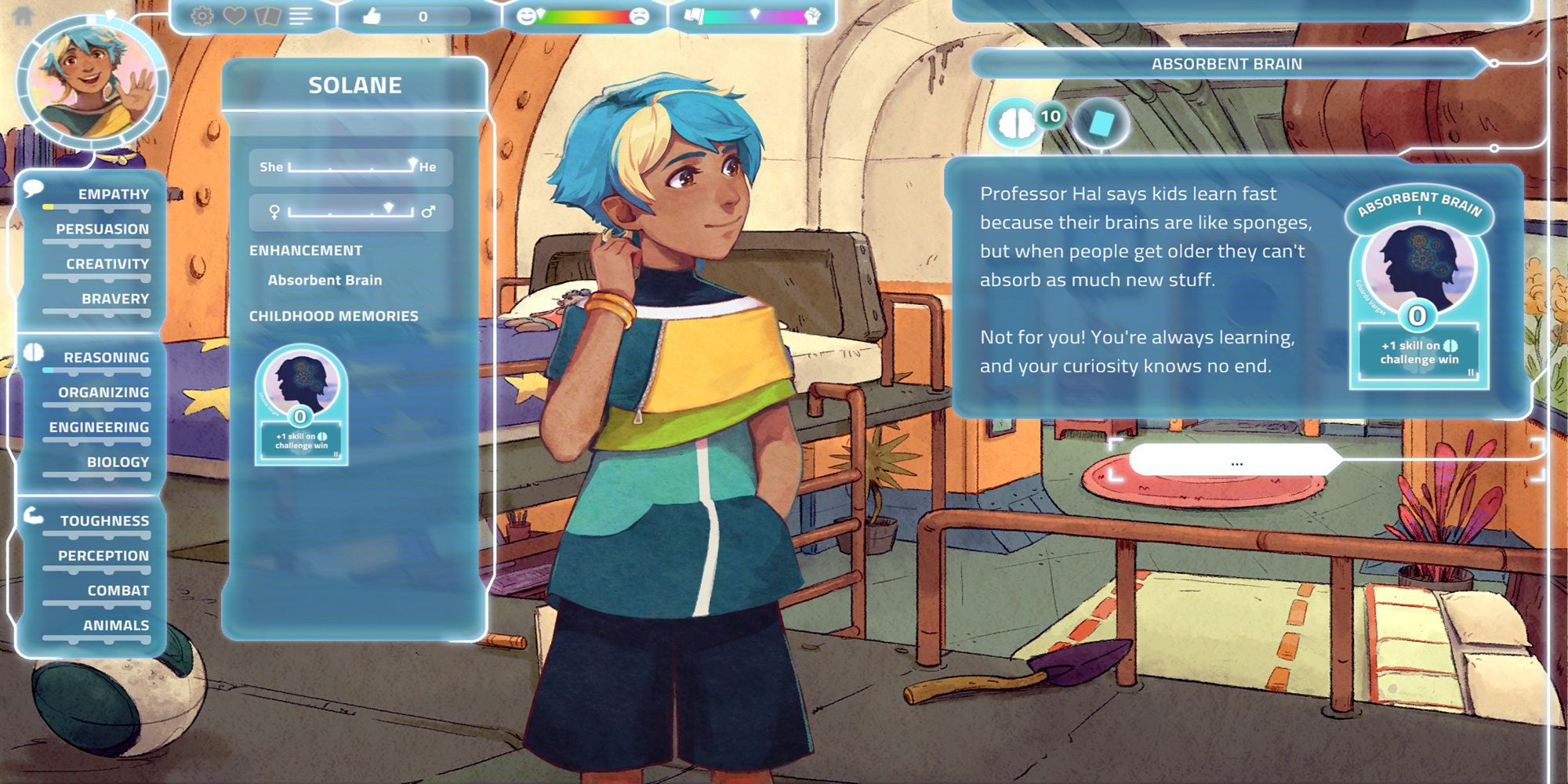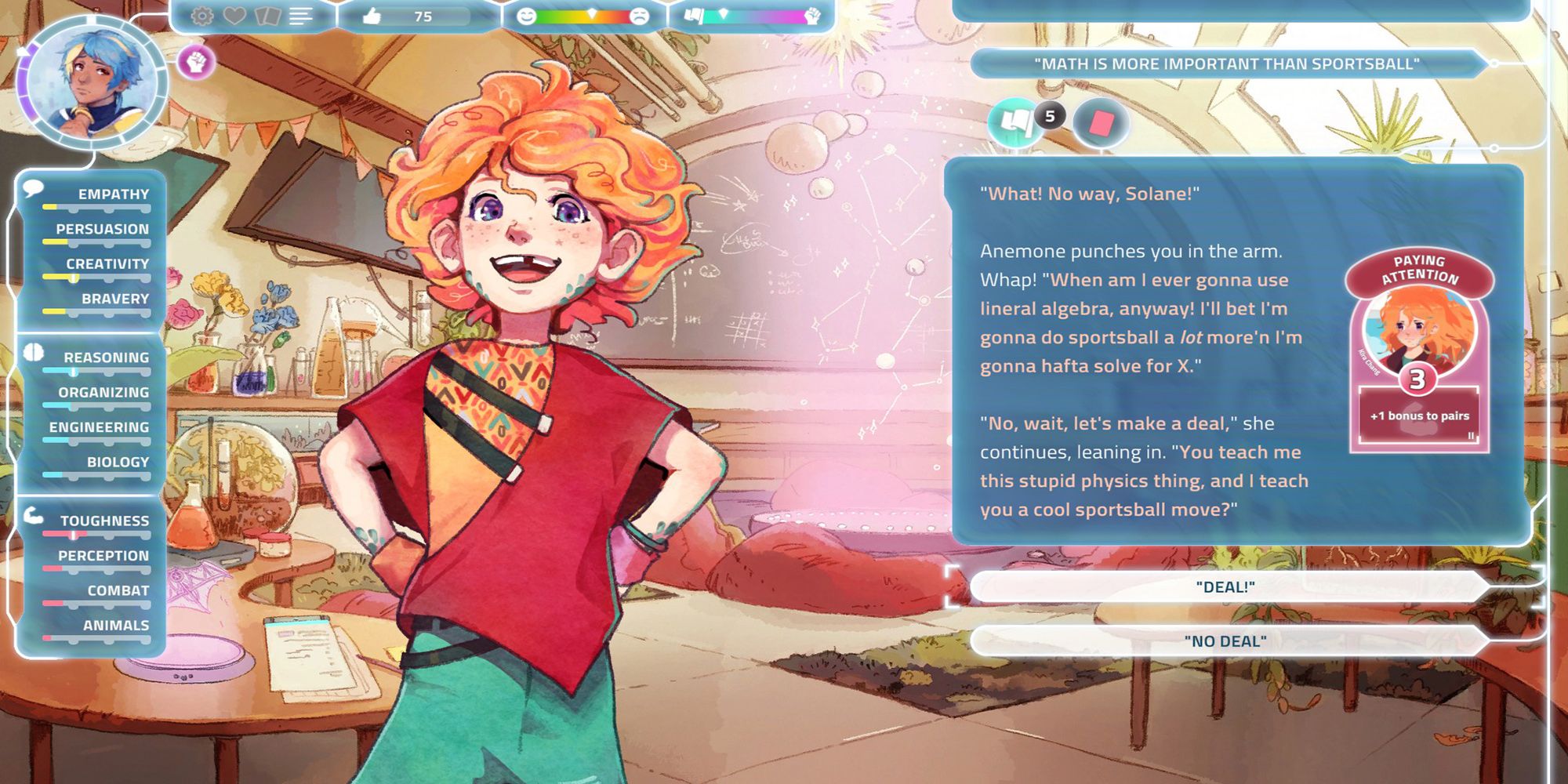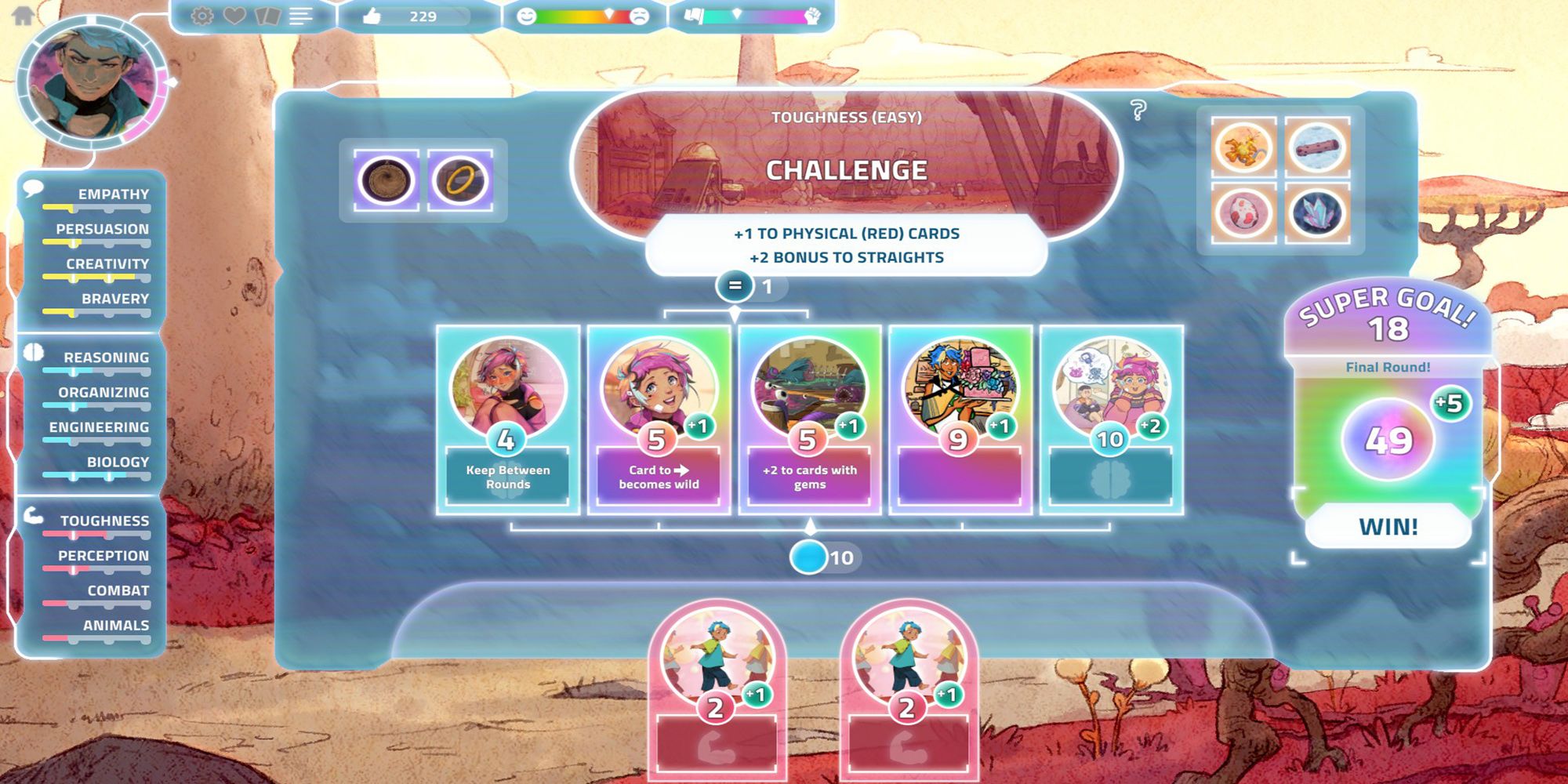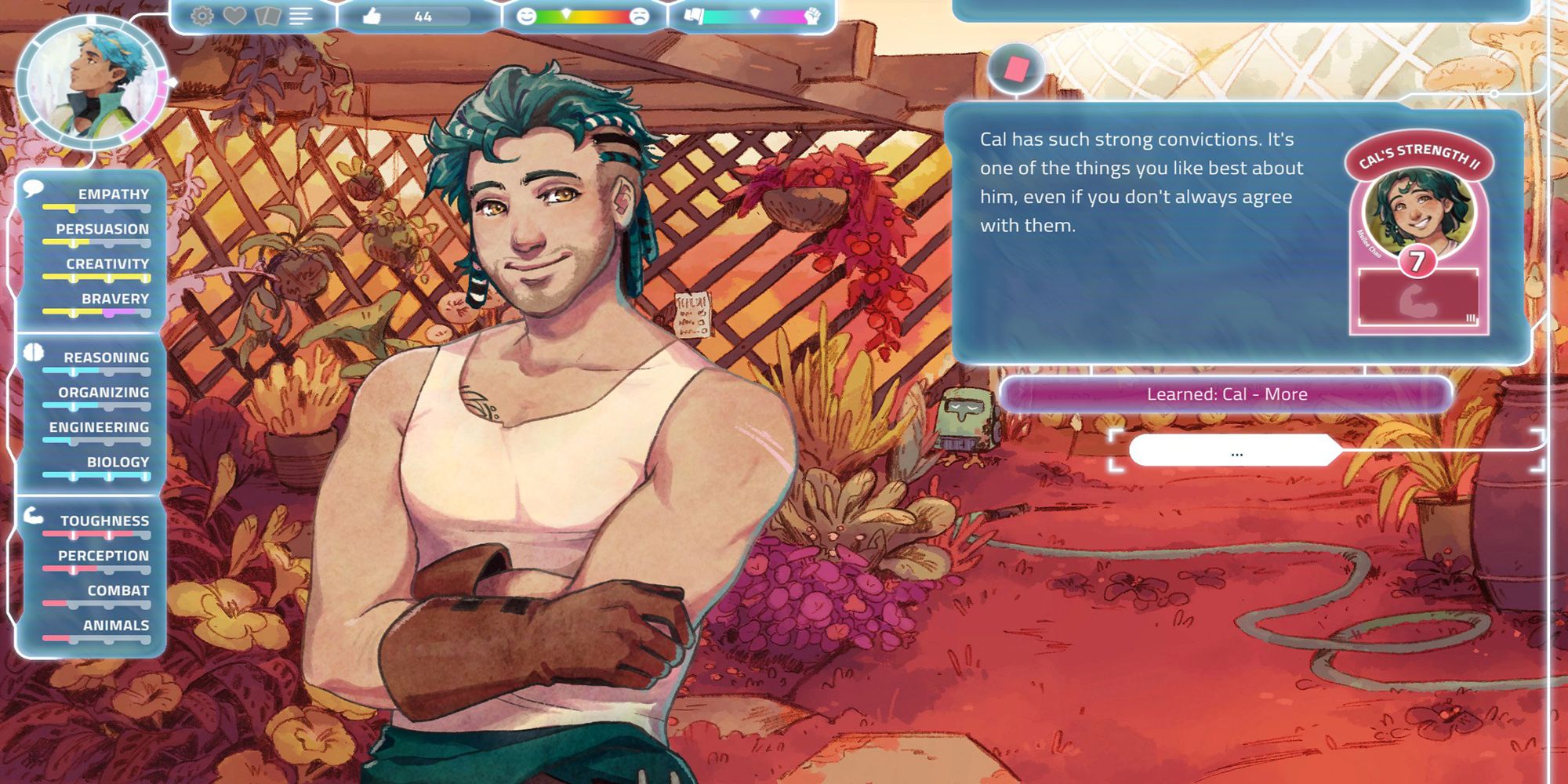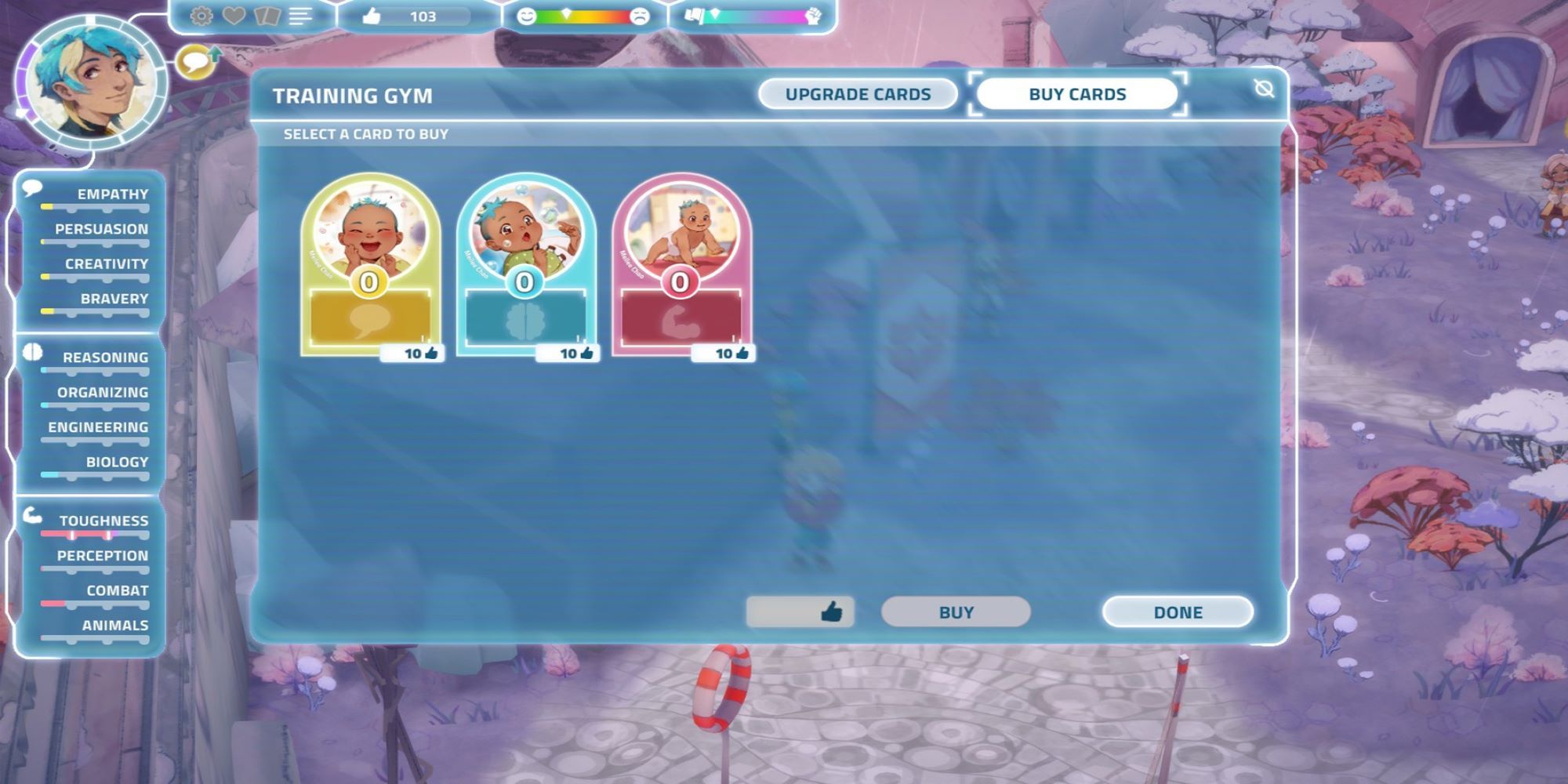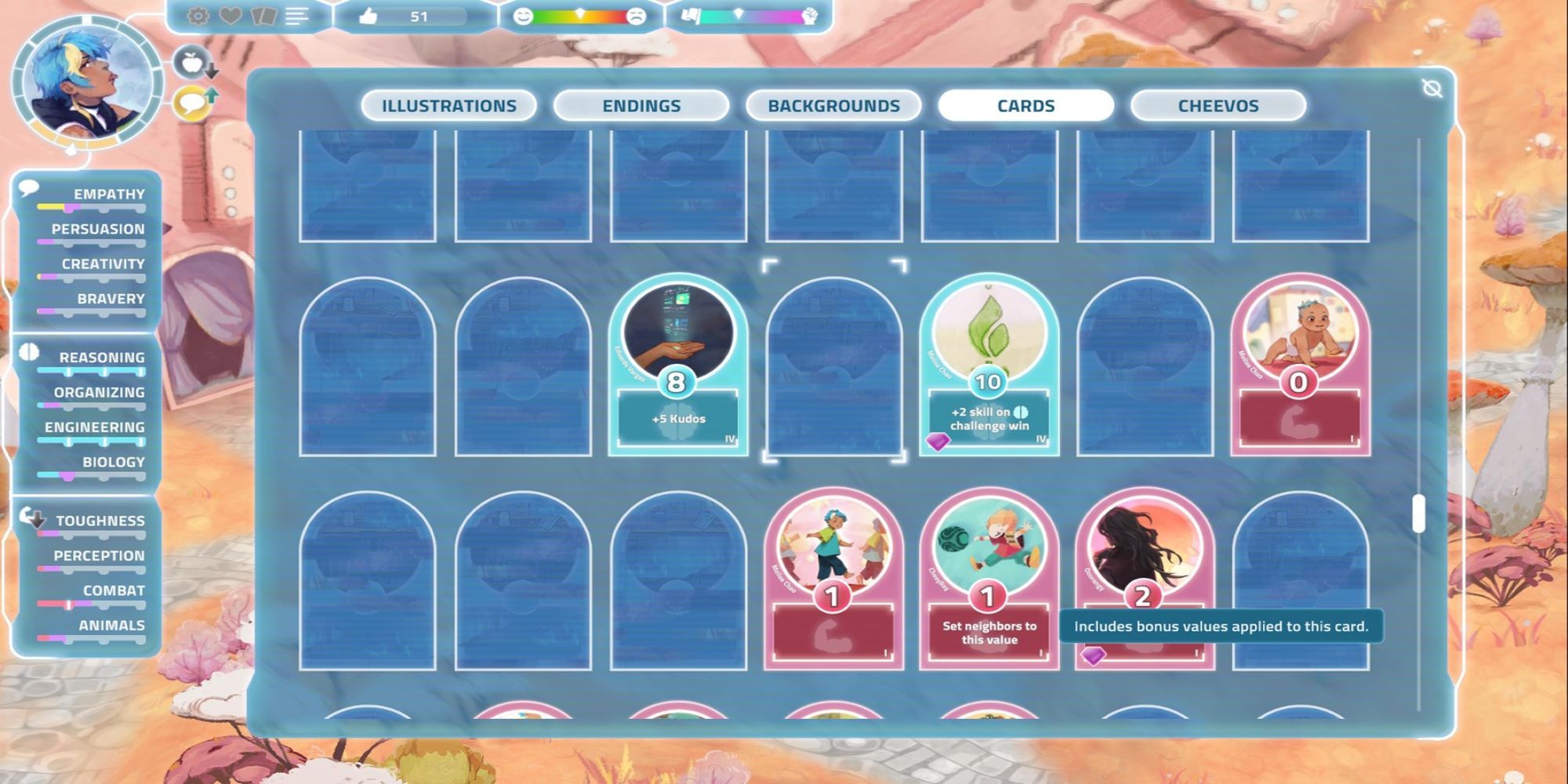Quick Links
Card challenges get progressively more formidable as you age in I Was A Teenage Exocolonist. Even with perfectly placed hands rife with blushes and straights, too many low-level cards will keep your goal out of reach. Therefore, knowing how to beef up your deck is essential.
Luckily, better cards will come your way if you invest time and effort into your colony. For instance, tasks as mundane as schoolwork could suddenly present a card challenge that rewards a rare card. Even conversations with friends can unlock significant, high-value memories. So, keep reading to learn how to unlock a lifetime's worth of memory cards!
Childhood Memories
Every playthrough begins with beginner cards based on foundational life events, like Giggling, Wondering, and Crawling. However, past these universal memories, your starting deck gets crafted from the memories you make as a child.
In your first playthrough, three childhood memories add cards to your deck at the beginning of the game: your genetic enhancement, childhood friend, and wormhole memory.
However, the character creation process becomes more in-depth in your second playthrough. In addition to the memories mentioned previously, you will also gain memory cards from a favorite bedtime story and a story with your childhood friend.
So that's five memory cards you can use to build a deck specialized around a specific skill or a balanced assortment of skills.
Story Events
The story is a significant part of I Was A Teenage Exocolonist. Your everyday choices affect relationships, income, skills, and the cards you equip. Sometimes these decisions have direct results. However, in other moments, making one decision can lead to a challenge that unlocks new cards upon completion.
As a rule, if a decision you make grants access to a card, a card icon will appear next to the option in the game dialogue. Hovering over such a choice reveals the card you'll get, including its point value and effects. These instances are more common in everyday life.
However, making specific decisions can unlock new cards further down the line. For example, you can choose to save a character in your second life that died in the first. Doing so rewards a card specific to that memory. Once you live through enough playthroughs, you'll recognize which paths lead to which cards. Until then, experiment with new timelines to see what you can discover.
Card Challenges
Card challenges, more specifically multi-round story challenges, often reward new memory cards when won. Story challenges take many forms. While some connect to significant life events, others present themselves during your work/school life. Furthermore, some story challenges can get repeated, while others cannot.
So, what are some story challenges you can anticipate? One excellent example is the yearly Vertumnalia competitions, which offer physical, mental, and social challenges. Unfortunately, each contest has a skill wall to enter. However, once you are viable to enter, you can take on these challenges yearly. In other words, even if you won the science fair in the last Vertumnalia, you can compete and win again in the next.
Winning or losing a competition does not have dire consequences. However, other story challenges can determine your fate and the fate of those around you. For instance, several combat challenges stand in the way of you saving beloved figures in the colony. And while you may not conquer these trials in your first lifetime, you can prepare and anticipate them in your second.
Spending Time With Friends
Each of your friends in the Vertumna colony specializes in different skills. For example, Marz and Tammy have expert social skills, Tang and Dys sport robust intellect, and Cal and Anemone have physical prowess. As you improve your skills in these areas, you'll unlock conversations with them that reward new cards.
For example, Anemone has multiple interactions that unlock at increasing toughness point benchmarks. In these interactions, you'll train with each other and gain a new card.
Additionally, spending time with friends may lead to romantic flirting opportunities. So, if there is a character you have your heart set on, investing in these interactions is a wise choice.
Purchasing Cards
The supply depot offers an assortment of gear and collectibles for sale. But what about memory cards? Is it even possible to buy memories? To a certain degree, yes! Base-level memory cards, like Crawling, Wondering, and Giggling, are available at the Garrison gym for ten kudos a piece. Furthermore, you can also upgrade memory cards at the gym.
Where Can I Track All My Cards?
You can track your cards in two ways: through the Gallery or the Memories menu. However, they serve two different purposes. The Gallery displays all the cards you've unlocked in the game across all playthroughs. However, the Memories menu shows your current card deck.
You can access the Gallery from the main menu when opening the game. However, if you wish to look at your card gallery mid-game, you can access the Gallery in the System menu. Once you open the Gallery, choose Cards to open a showcase of every card you have unlocked so far, including gear and collectibles.
Flamin' Hot Cheevo Alert: Collecting all the cards in the game unlocks the Collect Them All Cheevo (Cheevo is a nickname for Achievement, in case you were wondering.).
The Memories menu functions differently from the Gallery. This display only lists the cards currently available for challenges, sorted by suit, in order of numerical value. Furthermore, you'll see the number of cards you currently hold in the upper-left corner of the menu.
In short, think of the Gallery as your trading card book and the Memories menu as your battle deck.

